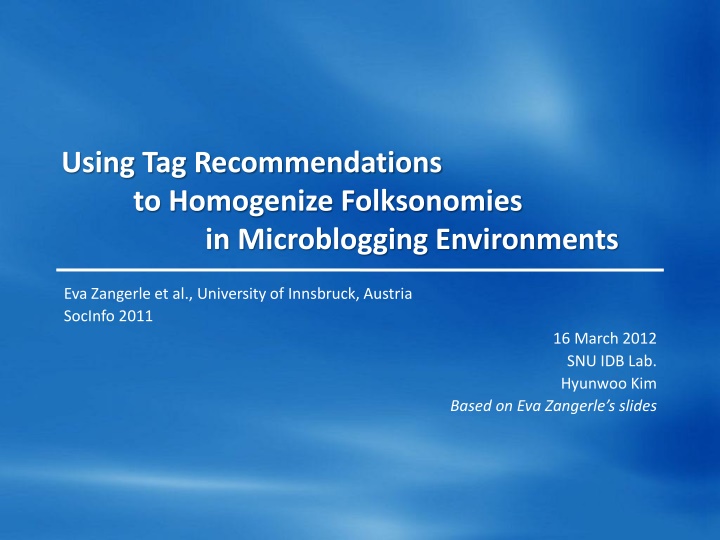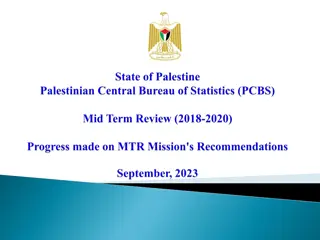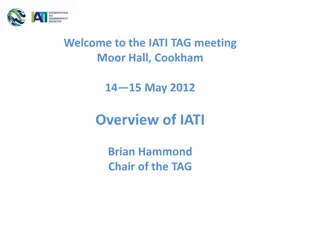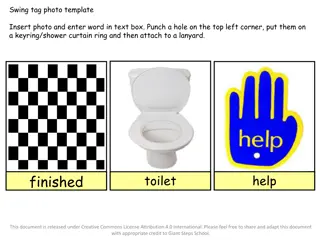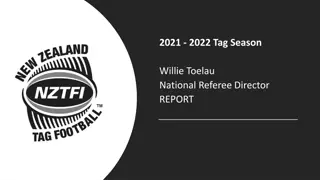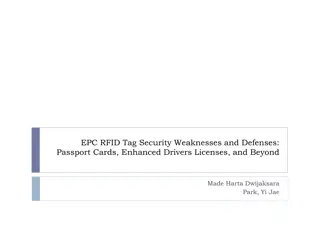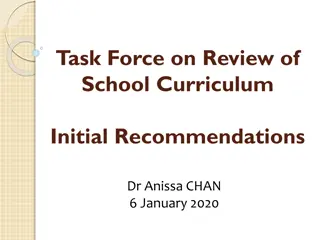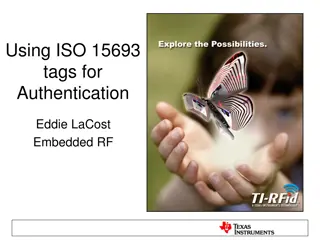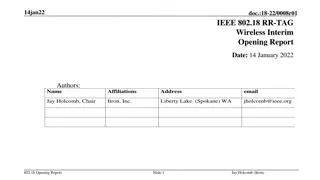Enhancing Folksonomies in Microblogging with Tag Recommendations
The study explores the use of hashtag recommendations to homogenize folksonomies in microblogging environments, aiming to improve search capabilities, categorization, and reduce heterogeneity by avoiding synonymous hashtags. By proposing a solution for recommending suitable hashtags, the research seeks to encourage users to utilize hashtags effectively, ultimately enhancing the overall user experience in microblogging platforms.
Download Presentation

Please find below an Image/Link to download the presentation.
The content on the website is provided AS IS for your information and personal use only. It may not be sold, licensed, or shared on other websites without obtaining consent from the author.If you encounter any issues during the download, it is possible that the publisher has removed the file from their server.
You are allowed to download the files provided on this website for personal or commercial use, subject to the condition that they are used lawfully. All files are the property of their respective owners.
The content on the website is provided AS IS for your information and personal use only. It may not be sold, licensed, or shared on other websites without obtaining consent from the author.
E N D
Presentation Transcript
Using Tag Recommendations to Homogenize Folksonomies in Microblogging Environments Eva Zangerle et al., University of Innsbruck, Austria SocInfo 2011 16 March 2012 SNU IDB Lab. Hyunwoo Kim Based on Eva Zangerle s slides
Outline Motivation Approach Ranking Methods Evaluation Conclusion Discussion 2
Motivation Hashtags Tags for Tweets (Manual) Categorization of conversations Follow streams of conversation Indicator for certain topic or audience #hashtag 3
Motivation Only 20% of tweets contain hashtags Hashtags can be chosen freely #socinfo2011? #socinfo11? #socinfo? all? Synonymous hashtags Heterogeneity Search capability limited Which stream to follow? 4
Motivation Proposed Solution: Hashtag Recommendations 5
Goals Recommendation of suitable hashtags during entering a tweet Encourage use of hashtags Improve search capabilities Better categorization Fight heterogeneity Avoid use of synonymous hashtags 6
Related Work Microblogging Tagging in Web 2.0 applications Recommender system Hashtag recommendation vs. tag recommendation Change at a fast pace Very dynamic Solely based on 140 characters vs. much more data 7
Approach - Workflow User enters message Retrieve 500 most similar messages Retrieve candidate-set of Hashtags Ranking of Hashtags Top-k Recommendations 8
Approach - Workflow #helloworld #hashtag #amen #seeuin12to14hours #twitter #... 1. #helloworld 2. #twitter 3. #whatshappening 100. #lowrank Retrieve hashtags Ranking of hashtags 500 most similar messages 9
Basic Ranking Methods Input: set of candidate hashtags (from 500 similar tweets) Output: ranked candidate list -> top-k shown 1. SimRank Use similarity measure of tweets for ranking (tf-idf cosine similarity) The higher the similarity of tweets, the higher the ranking of the corresponding hashtags 2. TimeRank Recency of usage of the hash tag The more recently a hashtag has been used, the higher the ranking within the candidate hashtags 10
Basic Ranking Methods Input: set of candidate hashtags (from 500 similar tweets) Output: ranked candidate list -> top-k shown 3. RecCountRank Count number of occurrences for each hashtag within candidate list The more similar tweet feature the hashtag, the higher rank of the hashtag 4. PopRank Global popularity of the hashtag within the whole dataset The more popular a hashtag is overall, the higher is its ranking 11
Hybrid Ranking Methods Based on 4 basic ranking methods ????? ?1,?2 = ? ?1+ (1 ?) ?2 Hybrid ranking computed for all possible combinations of basic ranking methods 12
Crawled Dataset Crawled July 2010 April 2011 (10 months) 18,731,800 messages in total 3,753,927 messages containing hashtags About 20% Used as dataset for evaluation 5,968,571 hashtags -> avg. of 1.6 hashtags 585,140 distinct hashtags 502,172 hashtags occurred less then 5 times 13
Evaluation Randomly select tweet t from dataset Remove hashtags from t Use t as input for recommendation algorithm Compute hashtag recommendations for t Use proposed ranking methods Compare top-k recommendations 14
Evaluation Dataset 3,753,927 messages 5,968,571 hashtags 585,140 distinct hashtags Test run 10,000 randomly chosen tweets (max. 5 hashtags) Retweets excluded 15
Evaluation Top-k recall for k=[1..10] for the basic ranking methods Good performance of the SimRank Poor performance of TimeRank and PopRank Not considering the actual content of the tweet itself 16
Evaluation Hybrid ranking methods ????? ?1,?2 = ? ?1+ (1 ?) ?2 Combining the other ranking methods with SimRank ? = 1: the result of SimRank ? = 0: the result of the second ranking method 17
Evaluation Refinement of recommendation How the recommendations are refined with every keystroke during the creation Ranking strategies which take global factors like time or popularity into account Performs reasonably well for short input strings Development of recall values as the user advances in entering the tweet Recall values for weight ? = 0.6 with 20% of the message as input 18
Conclusion Recommendation of hashtags to microblogging users Such recommendations help the user to 1. Use more appropriate hashtags and there for to homogenize the set of hashtags 2. Encourage the users to use hashtags as suitable hashtags 19
Discussion Strong points The first approach of recommendation of tags in microblogging platforms and hashtags for a certain Twitter message Weak points Lack of computational cost evaluation TF-IDF in tweets Hybrid approach (only 2 methods?) Utilizing semantics of #hashtag 20
Danke Schn #ThankYou
